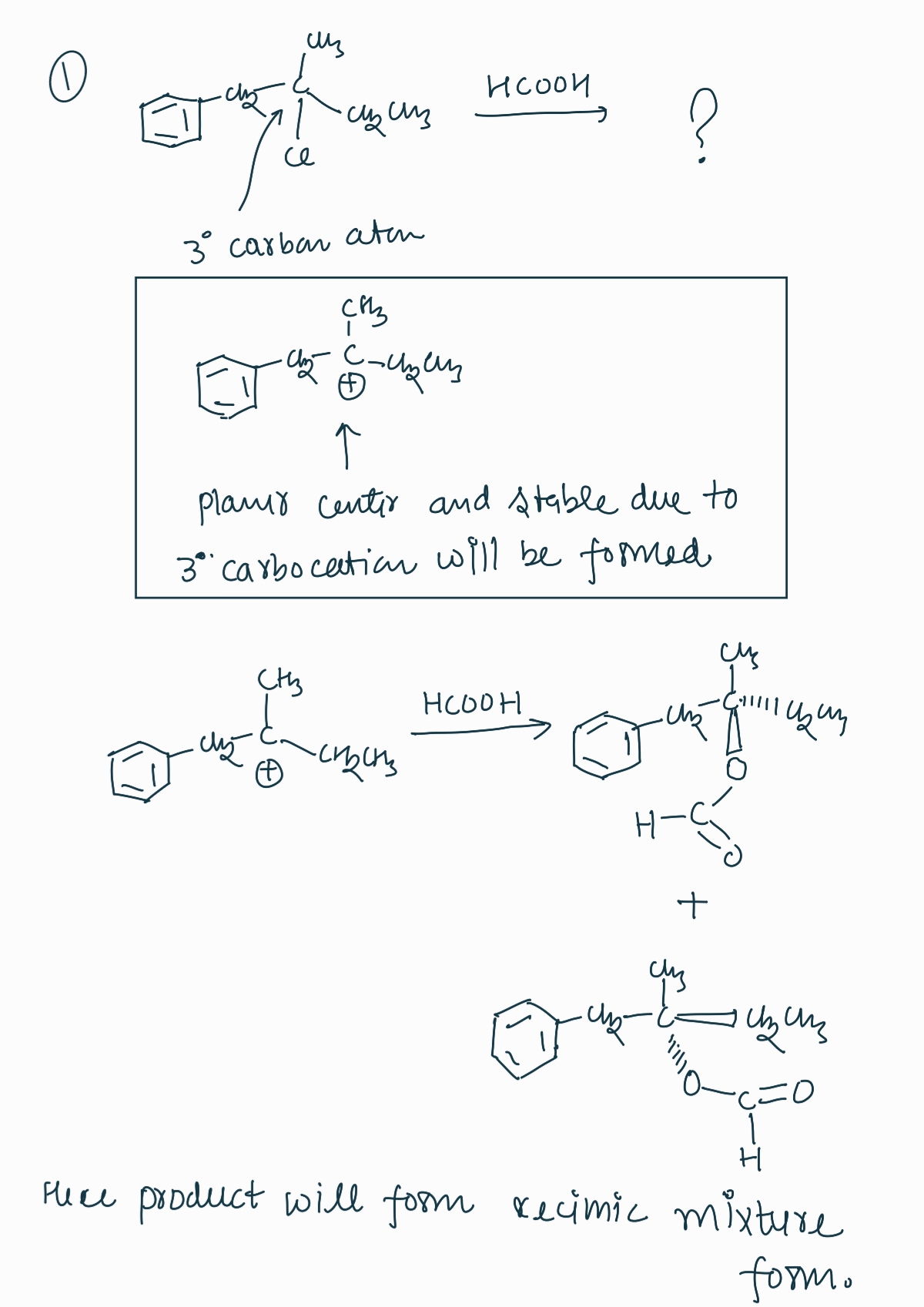Chemistry
10th Edition
ISBN:9781305957404
Author:Steven S. Zumdahl, Susan A. Zumdahl, Donald J. DeCoste
Publisher:Steven S. Zumdahl, Susan A. Zumdahl, Donald J. DeCoste
Chapter1: Chemical Foundations
Section: Chapter Questions
Problem 1RQ: Define and explain the differences between the following terms. a. law and theory b. theory and...
Related questions
Question

Transcribed Image Text:The image presents a series of chemical reaction equations, where each step involves the transformation or synthesis of organic compounds. Below is a detailed transcription and explanation of the reactions shown:
**Reaction 12:**
- **Starting Material:**
- A compound with a benzene ring attached to a carbon chain containing a chlorine atom (Cl) and ethyl groups.
- **Reagent:**
- Formic acid (HCO₂H).
- **Reaction:**
- The reagent is applied to the starting material, resulting in a transformation whose product is not shown.
**Reaction 13:**
- **Reagent:**
- Phosphoric acid (H₃PO₄) with heat (∆).
- **Product:**
- Methylcyclohexene, a cyclohexene ring with a methyl group (CH₃), plus water (H₂O).
**Reaction 14:**
- **Starting Material:**
- A compound with an alkene (double bond) and chlorine atom on an ethyl group chain.
- **Reagent:**
- Sodium hydroxide (NaOH) in dimethyl sulfoxide (DMSO) solvent.
- **Reaction:**
- The product from this reaction is not shown, indicating an elimination or substitution process.
**Reaction 15:**
- **Reagent:**
- Potassium hydroxide (KOH) with heat (∆) in ethanol (CH₃CH₂OH).
- **Product:**
- A cycloalkene compound with the alkene positioned as shown, labeled "only alkene isomer," along with potassium chloride (K⁺Cl⁻) and water (H₂O).
The image demonstrates the use of standard organic chemistry reagents and conditions to effect transformations such as dehydrohalogenation and dehydration, emphasizing mechanistic steps typical in organic synthesis. Each reaction set includes technical conditions (e.g., solvent, temperature) crucial for the expected reaction outcomes.
Expert Solution
Step 1

Step by step
Solved in 3 steps with 3 images

Knowledge Booster
Learn more about
Need a deep-dive on the concept behind this application? Look no further. Learn more about this topic, chemistry and related others by exploring similar questions and additional content below.Recommended textbooks for you

Chemistry
Chemistry
ISBN:
9781305957404
Author:
Steven S. Zumdahl, Susan A. Zumdahl, Donald J. DeCoste
Publisher:
Cengage Learning

Chemistry
Chemistry
ISBN:
9781259911156
Author:
Raymond Chang Dr., Jason Overby Professor
Publisher:
McGraw-Hill Education

Principles of Instrumental Analysis
Chemistry
ISBN:
9781305577213
Author:
Douglas A. Skoog, F. James Holler, Stanley R. Crouch
Publisher:
Cengage Learning

Chemistry
Chemistry
ISBN:
9781305957404
Author:
Steven S. Zumdahl, Susan A. Zumdahl, Donald J. DeCoste
Publisher:
Cengage Learning

Chemistry
Chemistry
ISBN:
9781259911156
Author:
Raymond Chang Dr., Jason Overby Professor
Publisher:
McGraw-Hill Education

Principles of Instrumental Analysis
Chemistry
ISBN:
9781305577213
Author:
Douglas A. Skoog, F. James Holler, Stanley R. Crouch
Publisher:
Cengage Learning

Organic Chemistry
Chemistry
ISBN:
9780078021558
Author:
Janice Gorzynski Smith Dr.
Publisher:
McGraw-Hill Education

Chemistry: Principles and Reactions
Chemistry
ISBN:
9781305079373
Author:
William L. Masterton, Cecile N. Hurley
Publisher:
Cengage Learning

Elementary Principles of Chemical Processes, Bind…
Chemistry
ISBN:
9781118431221
Author:
Richard M. Felder, Ronald W. Rousseau, Lisa G. Bullard
Publisher:
WILEY